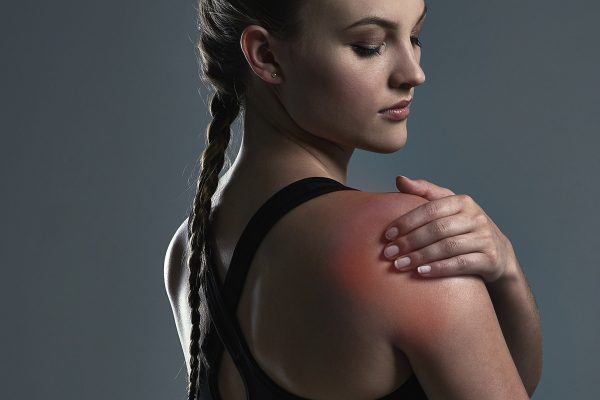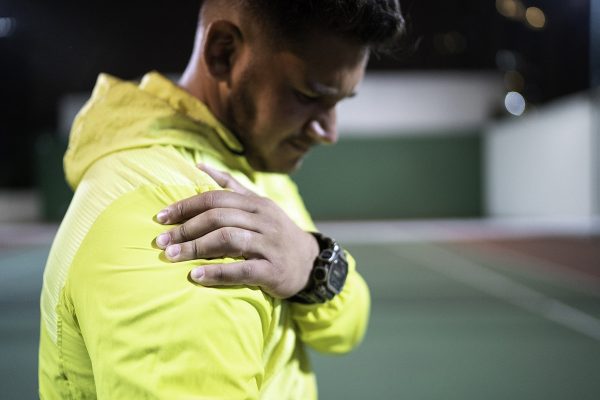
Rotator cuff tendinopathy is a condition that affects the tendons around the shoulder and can develop gradually over time. Common symptoms include shoulder pain, stiffness, and reduced range of motion, which may worsen with certain activities or at night. Rotator cuff tendinopathy occurs in different stages, progressing from mild irritation to more persistent discomfort and weakness if left untreated. Early recognition and management are important to prevent further damage and maintain healthy shoulder function.
Here are ten effective ways to treat rotator cuff tendinopathy:
1. Physiotherapy: Physiotherapy plays a vital role in the treatment of rotator cuff tendinopathy. A physiotherapist can design a customized exercise program that focuses on strengthening the rotator cuff muscles and improving shoulder mobility. They may also use techniques such as manual, ultrasound, or electrical stimulation to aid in healing.
2. Rest and Activity Modification: Rest is crucial for allowing the injured tendons to heal. Avoid activities that aggravate the symptoms and modify your daily routines to reduce strain on the shoulder joint.
3. Cold and Heat: Applying cold packs (ice) to the affected area can help reduce pain and inflammation. Heat, such as using a heating pad, can help relax the muscles and promote blood circulation, aiding in the healing process.
4. Nonsteroidal Anti-inflammatory Drugs (NSAIDs): Over-the-counter NSAIDs like ibuprofen or naproxen can help reduce pain and inflammation. Consult your doctor or pharmacist before taking any medication.
5. Corticosteroid Injections: In some cases, corticosteroid injections may be recommended to reduce inflammation and provide short-term pain relief. These injections are usually administered by a healthcare professional.
6. Chiropractic Care: Chiropractors offer a quick way to get rid of rotator cuff tendinopathy. They can use various techniques like spinal adjustments, soft tissue mobilization, and exercises to help relieve pain and restore proper shoulder function. They may also provide advice on posture correction and ergonomic modifications.
7. Massage: Massage can help reduce muscle tension, improve blood flow, and promote relaxation. A registered massage therapist (RMT) can target specific muscles around the shoulder to alleviate pain and stiffness.
8. Acupuncture: Acupuncture involves the insertion of fine needles into specific points in the body to stimulate healing and relieve pain. Some people find acupuncture helpful in managing rotator cuff tendinopathy symptoms.
9. Ultrasound treatment: Ultrasound uses sound waves to promote tissue healing and reduce pain. It is commonly used in conjunction with other treatments like physiotherapy.
10. Progressive Strength Training: Once the initial pain and inflammation have subsided, a progressive strength training program can be beneficial for rehabilitating the rotator cuff muscles. This should be done under the guidance of a qualified healthcare professional to ensure proper form and prevent further injury.
The Role of Sleep and Nutrition in Recovery
When recovering from rotator cuff tendinopathy, lifestyle factors play a vital role in supporting healing. One of the most overlooked aspects is sleep. Research shows that sleep helps heal rotator cuff tendinopathy by allowing the body to repair damaged tissues, regulate inflammation, and restore muscle strength. Poor sleep or sleeping in awkward positions can, however, aggravate shoulder pain and slow recovery, so maintaining a supportive sleep position and adequate rest is key to recovery.
Nutrition is another critical component of healing. Certain foods can promote inflammation and hinder tendon repair, so it’s important to understand which foods to avoid eating with rotator cuff tendinopathy. Highly processed foods, refined sugars, and excessive alcohol can all contribute to inflammation and delay recovery. Instead, focus on a balanced diet rich in lean proteins, omega-3 fatty acids, fruits, and vegetables to support tissue healing and joint health.
Remember, it’s essential to consult with a healthcare professional such as a physiotherapist, chiropractor, or sports medicine specialist to receive an accurate diagnosis and personalized treatment plan for your specific condition.
If you are experiencing pain or discomfort in your shoulder, it is important to seek medical attention. While rotator cuff tendinopathy can be a challenging condition to deal with, there are several treatment options available. Rest and lifestyle changes, physiotherapy, medications, surgery, and alternative treatments can all be effective in treating rotator cuff tendinopathy. With the help of your doctor and a tailored treatment plan, you can get back to your normal activities and live a pain-free life.
If you have any questions or would like to explore further, please book a free, no-charge online appointment with either myself, Sam Heslip, RMT, or another Kitchener RMT at CARESPACE.We are happy to listen and are here to help!
For expert insights on shoulder health and recovery, visit our Rotator Cuff Tendinopathy Resource Hub.




